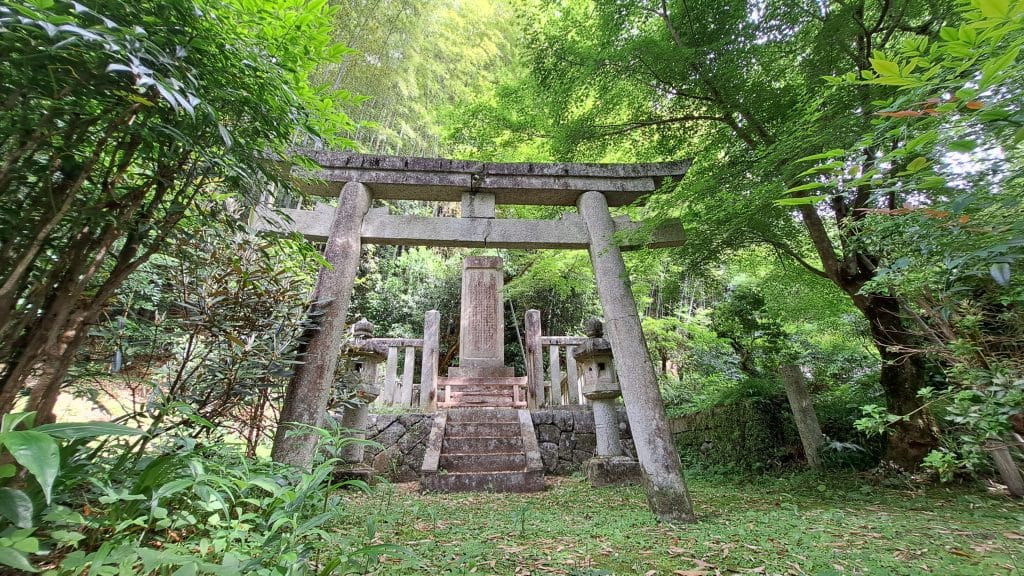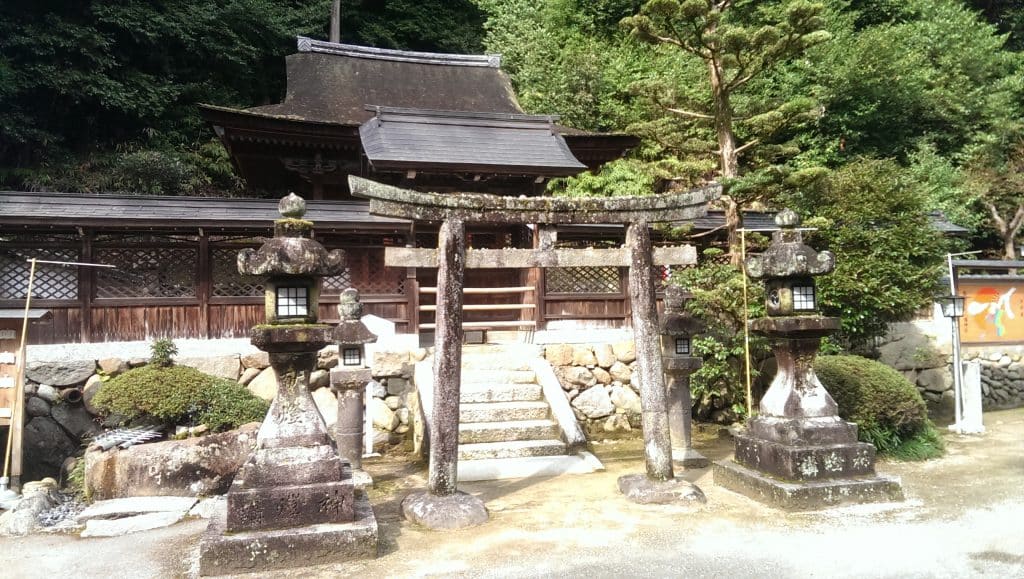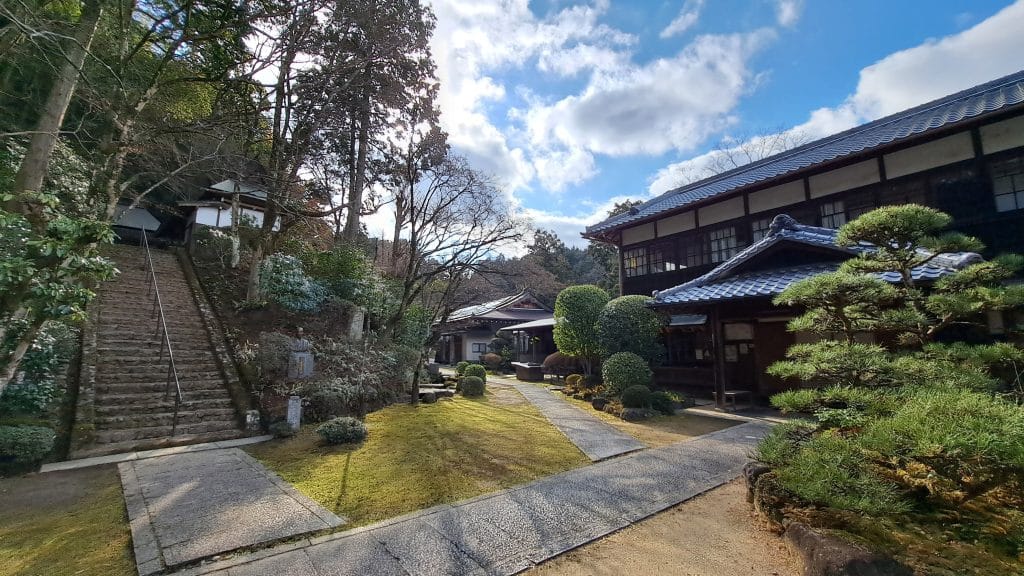Samurai culture has held a fascination for people from outside of Japan pretty much since the first foreigners landed on these shores hundreds of years ago. And many Japanese towns and cities are fiercely proud of their connections to famous samurai warriors throughout history. Something they often try to capitalize on for tourism purposes.

However; despite their interest in samurai culture generally, many people outside of Japan wouldn’t be able to name more than perhaps a couple of the most well known historical figures and the stories behind them.
Probably one of the best examples of this begins with a statue outside the Imperial Palace in Tokyo. Seen by millions of people every year, many will even take a few photos of this proud and fearsome looking warrior. But few will notice the nameplate and why, of all the powerful and fascinating samurai, just this one man has a statue at the palace.
That samurai is the 14th century nobleman, tactician, and warrior, Kusunoki Masashige. He was active at a time which saw the fall of the Kamakura Shogunate as well as a period of civil war in which two rival Imperial Courts battled for control of Japan, eventually giving rise to the Ashikaga Shogunate.
He was born to a noble family in Osaka’s Chihaya-Akasaka village. And here in my adopted hometown of Kawachinagano and the surrounding areas, we have a close connection to arguably one of the most important samurai in history.
Table of Contents
Kanshin-ji
This temple in Kawachinagano had perhaps the greatest impact on Kusunoki Masashige and I wrote about it in some detail in my last article. It was here that the young samurai was educated and he maintained a close relationship to it throughout his life.

He paid for significant renovations to the temple and even commissioned the building of a new 3 tier pagoda. Only the first level of the pagoda was completed by the time of his death so as a mark of respect, they left it at single floor and capped it with a thatched roof.
After he was killed in battle, his head was returned to Kanshin-ji temple for burial and the Kubi-zuka (neck cut grave) can still be found in a quiet corner of the temple grounds. Normally the head of such a high ranking samurai would be a trophy so this shows how highly respected he was, even by his enemies.

Kanshin-ji can be easily reached by taking any bus from stand 3 at Kawachinagano Station and getting off at the stop called Kanshin-ji.
Amanosan Kongo-ji
On the opposite side of Kawachinagano, Amanosan Kongo-ji temple was another extremely important temple during the 14th century. While it’s connection to Kusunoki Masashige is not quite as personal as that of Kanshin-ji, it was important nonetheless.
The temple archives contain a lot of correspondence from Kusunoki and his family and a small museum within the grounds of the temple also contain some artefacts from his lifetime.


What makes this temple key to the wider story of the period though is the fact that for a time it was used as a temporary capital for the southern court Emperor Go-Murakami and his predecessors. Emperor Go-Murakami would later be buried at Kanshin-ji following his death.
There was even a brief period when captured Northern Court emperors were held prisoner at the temple. They were confined to lavish quarters just a few meters away from their Southern Court opponent, across a narrow pathway and it is said that they would regularly trade insults with each other.
It remained an Imperial Palace until 1392 when final Southern Court emperor, Go-Kameyama abdicated in favour of his northern rival, Emperor Go-Komatsu. Because of this brief period as the seat of power in Japan, this temple is sometimes referred to as Amano Angū or Amano Temporary Palace.

Amanosan Kongo-ji is also sometimes referred to as a Nyonin Koyasan, or Women’s Koyasan. This dates back to the time when women were prohibited from visiting Koyasan itself so would instead come here to pray.
This came about in the middle of the 12th century when Emperor Go-Shirakawa arranged for a monk called Akan to come down from Koyasan and renovate the temple. At the same time, the Emperor’s sister, Hachijo-Nyonin, requested a statue of Kukai, founder of Koyasan, to be enshrined at the temple.
Amanosan Kongo-ji even once used to brew its own special kind of sweet sake. This drink was a favourite of Toyotomi Hideyoshi, the great warlord who controlled most of Japan in the late 16th century and who’s death led to the Battle of Sekigahara. It is said that the temple has a letter from Toyotomi strongly requesting that they brew this sake for him. Although the temple no longer produces it itself, Amano-sake is still brewed in Kawachinagano’s Saijo Sake Brewery.
The temple covers quite a large area on the western side of Kawachinagano. The three statues within the main hall are designated as national treasures though they are not always on full view to the public.

By paying a separate entry fee of JPY 300, you can access an inner part of the temple which contains a picturesque Japanese garden as well as the small museum.
Amanosan Kongo-ji can be reached by taking a bus from stand 4 bound for Komyoike Station and getting off at the stop called Amanosan.
Yabusu Kannon and the Oe Tokichika Residence
During his younger years, Kusunoki Masashige would make regular trips across Kawachinagano to visit his strategy teacher. A man by the name of Oe Tokichika. Oe’s house was right in the heart of Kawachinagano, in an area that at the time would have been really quite isolated. Every time he made the journey, he would pray at a small shrine to Kannon, the Buddhist goddess of mercy, in an equally isolated area a little to the north.

On one of these occasions, an assassin was laying in wait near the statue of Kannon, hoping to kill the young samurai while he was vulnerable. He approached the statue and just as the assassin shot his arrow, Kusunoki bowed in prayer. At the same time, a guest of wind blew upon the door to the shrine. The arrow sailed harmlessly over his back and instead struck the statue within.
His plan foiled, the assassin escaped into the woods and henceforth, the statue became known as the “Yabusu Kannon” taking its name from the characters Ya meaning arrow and Husu/Busu meaning to bow.
Although the house of Oe Tokichika is long gone, there is an interesting stone monument, almost like a small, stone shrine that marks its location close to the centre of Kawachinagano.

The Yabusu Kannon is hidden among the trees on a small rise just on the edge of a residential district called Oyabune Kitamachi though there aren’t any signs to show exactly where it is.
Kanayama Inari Shrine and the Battle of Amami
Hidden on a small, unassuming hilltop in the village of Amami in the far south east corner of Osaka is Kanayama Inari Shrine. It’s the kind of shrine you would never even know was there unless you had a fairly intimate knowledge of the area.

The original incarnation of the shrine is supposed to have been built by Kusunoki Masashige to give thanks following his fairly stunning victory in a battle that took place at the foot of the hill.
Kusunoki and his men were camped out on this hillside during the cold of early January, waiting for a large army marching under the banner of the Kamakura Shogunate who were travelling north along the Koya Kaido pilgrimage road.

As they reached the base of the hill, Kusunoki gave the order to charge. Despite being vastly outnumbered, the surprise and ferocity of Kusunoki’s attack caused considerable casualties and forced the much larger army to retreat.
The shrine is at the end of a short hiking trail, punctuated by a handful of weather-beaten red torii. From time to time, a break in the foliage allows you to see out over the villages of Amami and Nagaretani, giving a spectacular view that few people would associate with Osaka. At the top of the hill, the trail opens out into a small courtyard while the tiny shrine itself, barely more than an altar, sits atop a small set of stone steps.

While the trail is only short, it isn’t one that I can recommend. To reach the trailhead, you first have to pass through someone’s property and the trees on the trail can be prone to collapse.
Chihaya Castle
Although it is listed as one of the “Top 100 Japanese Castles”, Chihaya Castle on the slopes of Mount Kongo doesn’t really conform to the typical idea of a Japanese castle. It had no keep or complicated network of stone ramparts and moats and nowadays you would be hard pressed to find any remnants of it at all.
In fact it was probably closer to a guerilla base than a castle. It did make use of earthen ramparts and palisades but what really made it effective was Kusunoki’s tactical genius and intimate knowledge of his surroundings.

He bolstered the traditional defenses with complex networks of deadly traps. Pitfalls, rockfalls, rolling logs and moving platforms were placed to hinder, wound and demoralize any approaching army and these were all put to good use in 1333 when an army of the Kamakura Shogunate laid siege to the castle.
The vast attacking army suffered terrible losses thanks to these elaborate traps and the tenacity of Kusunoki’s men. With a considerable portion of the Shogunate forces tied up and delayed by Kusunoki’s courageous defence, it not only freed up Emperor Go-Daigo and his forces who were stuck at Yoshino, it also left the Shogunate capital at Kamakura exposed. This allowed more of Go-Daigo’s forces to attack Kamakura directly and bring about the end of the Kamakura Shogunate.

His success here at Chihaya Castle came about in no small way to his experience at one of his earlier fortifications, Akasaka Castle in the village of Chihaya-Akasaka. Here, with an unprotected water source and only traditional defences, he was easily overrun during a siege and was forced to fake his own death in order to escape.
I have personally never been able to find any real signs of the castle, it may be that nothing at all exists anymore apart from a few faint earthworks. However, there is a stone marker bearing the name of the castle in the grounds of Chihaya-jinja, a small and quite eerie shrine.

Chihaya-jinja and the castle monument can be accessed by taking a bus from Kawachinagano Station stand 3 bound for Kongo-san Ropeway-mae. Getting off at the penultimate stop called Kongosan-guchi. Nearby you will see a set of rough stone steps which lead up into the shrine.
Eboshigata Castle
Eboshigata Castle in Kawachinagano wasn’t a castle in the more modern sense of the word, rather it was more like a fortified check-point along the Koya Kaido, the ancient pilgrimage road that connected Kyoto in the north to Koyasan in the south.

Kusunoki Masashige established the castle as a way to protect people following the Koya Kaido from bandits. It also served to provide him with income from tolls but perhaps more importantly, he could learn information and news from other parts of Japan. At the time, the only people who were really allowed to travel out of their local areas were those on a pilgrimage.
There isn’t much in the way of physical evidence of the castle itself aside from a few earthworks scattered around the forested hillside. However, there is still a small shrine, Eboshigata Hachiman, near the base of the hill, directly overlooking the nearby stretch of the Koya Kaido route, and a kids playground on the opposite side of the hill.

Eboshigata is about a 20 minute walk from Kawachinagano Station and you can find it by following the various signs for the Koya Kaido.
Fujii-dera
This temple is perhaps most well known as the fifth temple of the Saigoku Kannon Pilgrimage since its main object of worship is a statue of Kannon, goddess of mercy, which has an impressive 1,041 arms and is a designated national treasure.

The temple was admired by Emperor Go-Daigo, whom Kusunoki Masashige served as well as Go-Daigo’s son, Emperor Go-Murakami whom Kusunoki Masatsura, son of Masashige also served.
Within the grounds of the temple is a large pine tree known as the Hatatake-no-Matsu. Legend has it that Kusunoki Masashige once stood under this tree with his three sons: Masanori, Masatsura and Masatoki, and made them take an oath. He made them promise to always join forces so that they would be like the three-pronged pine needles that grew on the tree.

It is said that the pine needles from this tree can grant luck and strength so they are sometimes used as keepsakes by people who are aware of the story.
Fujii-dera is a short walk from Fujii-dera Station on the Kintetsu Minami Osaka Line.
Koshigami Shrine
Koshigami jinja is a tiny shrine in a very quiet part of Tondabayashi City in southern Osaka. Virtually unknown to all but those who live in the immediate vicinity, this small site is far more interesting than one might expect for its size.
It is said that the shrine was founded around the year 645 about the same time as the Taika Reform, Japan’s first full constitution, came into effect. Then later, in the 14th century, Kusunoki Masashige stopped here on his way from Kanshin-ji to join the forces of Emperor Go-Daigo in battle against the Kamakura Shogunate.

His horse, Chihayamaru could no longer run because it was exhausted and had hurt its back so Kusunoki tied it to a wisteria tree and prayed at the shrine. His horse was healed and Kusunoki was able to continue his journey.
That ancient wisteria tree is still at the shrine, making it at least 700 years old. It is a magnificent tree, all tangled in knots and hanging from another tree. The shrine itself is very small, consisting of one little hall and courtyard surrounded by a collection of stone monuments.

While it isn’t necessarily a place that would be worth going out of your way to visit (unless the Wisteria is in bloom), this shrine does have a particular appeal to me. It is an interesting place that I stumbled upon completely by accident, something that happens all the time while I’m out walking. It’s also a great example of how even a place as small and simple as this can have a fascinating history behind it.
Koshigami Shrine is about a 20 minute walk from Shionomiya Station on the Kintetsu Nagano Line.
Nanpian Kannon-ji
Kusunoki Masashige’s wife, Hisako, is also an important figure in his story although she doesn’t tend to get much of a mention. After his death at the Battle of Minatogawa and the death of her eldest son Kusunoki Masatsura at the Battle of Shijonawate, Hisako became a Buddhist nun and moved to a temple on the edge of Tondabayashi City called Nanpian Kannon-ji.

This temple had been established by Masatsura in 1339, but was largely destroyed by fire at some point during the many wars which took place between the end of the Nanboku-cho period and Meiji Period and it was largely abandoned for a time, not being rebuilt until around the 1920s.
Her grave is on a mossy, tree-covered rise overlooking the temple courtyard. This part of the hillside also hosted the house in which she lived out the rest of her life while she tended the 11 faced statue of Kannon, Goddess of Mercy. At some point, the grave is also believed to have been damaged and rebuilt with the only original remnant being a small 5 tier stone stupa.

Nanpian Kannon-ji can be reached by taking a bus from stand 3 at Kawachinagano Station bound for Kobukidai, get off at the stop called Kobukidai Nishiguchi and walk for about 25 minutes.
The Demise of a Legendary Samurai
Finally, the reason why Kusunoki Masashige is the only samurai to be honoured with a statue at the Imperial Palace is because he is seen as the epitome of devotion to the emperor.
Throughout his life, he was considered to be one of the top generals and advisors to Emperor Go-Daigo and was instrumental in Go-Daigo’s campaign to restore power to the Chrysanthemum Throne.

However, his final battle at Minatogawa in modern-day Kobe came about because Emperor Go-Daigo chose to ignore Kusunoki’s advice and choose a much riskier strategy devised by Nitta Yoshisada for an attack on Kyoto.
Kusunoki had suggested attacking Kyoto from Hiei-san, after enlisting the help of the warrior monks who resided in the temple on the mountain. Nitta instead thought it would be better to assault Kyoto from the direction of Kobe and recommended that Kusunoki spearhead that attack.
Even though he knew it was a foolish plan that would certainly result in his death, Kusunoki could not go against the word of the Emperor and so, with minimal complaint, he readied himself for war.

As he charged into battle with just a few hundred soldiers, his brother is said to have shouted something along the lines of “Would that I had seven lives to give for my Emperor!”. With no reinforcement from his allies, Kusunoki Masashige, his brother and the rest of his unit were killed to a man.
As an ardent history fan, sometimes I really enjoy picking a lesser known character from Japanese history and doing a bit of a deep-dive into their life. It allows me to find many of these small locations with surprisingly rich and fascinating folklore.




















Gary, this an excellent article! Very comprehensive. I just recently saw the statue by the Imperial Palace. Cheers!
There was also statue of Kusunoki in front of Kawakami Elementary school at Kawachinagano were Wesson Sensei told me about Kusunoki Masashige.